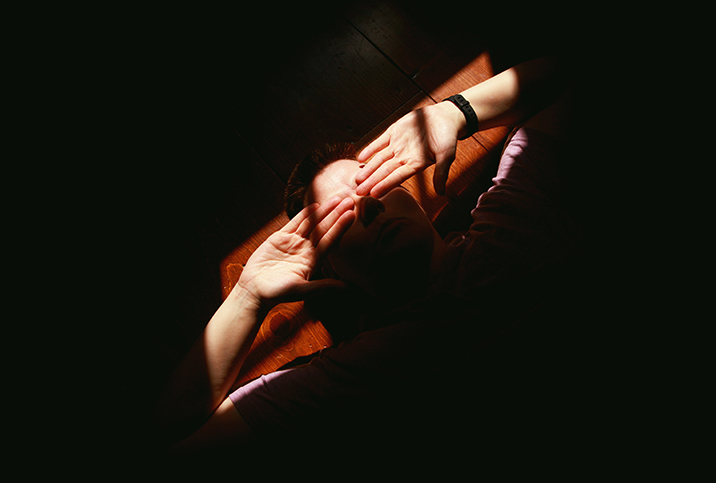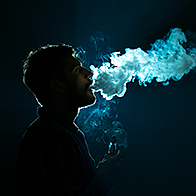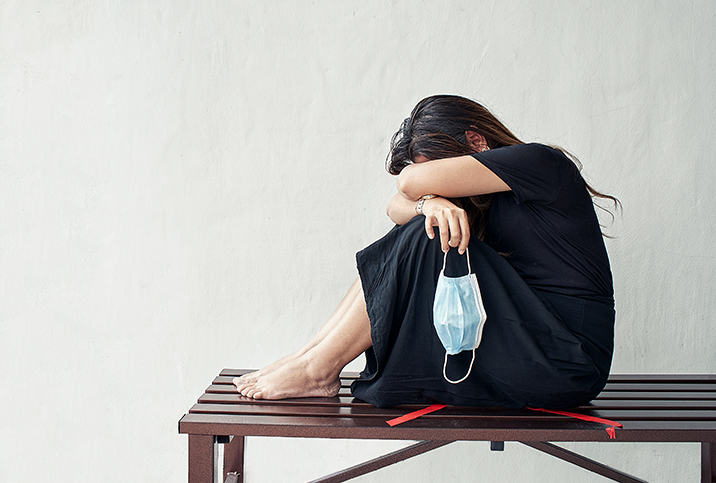How to Cope With and Prevent Panic Attacks

Tightness in your throat, trembling, rapid breathing, pounding heartbeat—all with a sense of impending doom? You might be having a panic attack. In any given year, up to 11 percent of Americans suffer one. Some of these people may develop panic disorder: nearly 2.5 million Americans ages 18 to 54 annually, with women twice as likely to as men.
Panic attacks 101
A panic attack is a sudden, significant sensation of extreme fear or anxiety associated with multiple physical symptoms, such as shaking, sweating, short and shallow breathing, rapid heart rate, chest pain, headache, dizziness and numbness.
Panic attacks can strike at any moment, in any place, but generally, they are brought on by a stressful event or situation. Common triggers are large crowds, extreme stress, getting into an elevator and—for some people—even just lying in bed or getting into a car. In one study, more than 35 percent of adults said crowded rooms were their No. 1 trigger. Attacks can be terrifying for both the people who experience them and those around them who don't know how to help.
Panic attacks are thought to be linked to the fight-or-flight response; your body senses danger, your adrenaline spikes and you begin to experience the symptoms of significant duress, even when there's no true jeopardy. The cause of panic attacks isn't fully understood, but genetics are thought to play a role. Risk factors include extreme stress (e.g., trauma, sexual assault, accident, abuse, the loss of a loved one), major life changes (e.g., divorce, new baby), smoking, high intake of caffeine and a history of childhood abuse.
Though panic attacks typically don't pose a threat to health, if you've had one and struggle with anxiety around a possible recurrence, you may suffer from panic disorder. Your quality of life and ability to function can be significantly affected. You may be more likely to withdraw from activities, and your work, social life and family relationships may suffer. If serious enough, panic disorder can lead to an increased risk of depression, substance abuse and suicidal thoughts.
If you are suffering panic attacks regularly or think you may have panic disorder, it's important to talk to a doctor right away to discuss treatment options.
What to do
If you experience anything like what's been described, a doctor's first steps will be to rule out medical issues (like a heart attack) that can cause similar symptoms, screen you for panic disorder and discuss options. While panic attacks are terrifying, they are also reasonably well treated with medications such as selective serotonin reuptake inhibitors, or SSRIs (fluoxetine, sertraline); serotonin-norepinephrine reuptake inhibitors, or SNRIs (venlafaxine); and short-term use of benzodiazepines (alprazolam, clonazepam). Other treatments include psychotherapy and cognitive behavioral therapy, where you talk about your attacks to understand them better and learn coping techniques. Studies have shown a combination of medication and therapy leads to the best results.
In the moment of a panic attack, key strategies can keep you afloat. Ironically enough, it's critical not to panic about panicking. If you think you're beginning to have a panic attack, shift your focus. Although that may sound like a real eye-roll, think to yourself, "It's OK," or repeat an empowering mantra such as "I am strong; this will pass."
Breathing exercises help prevent hyperventilation and keep your nervous system calm. An effective breathing exercise is to take long, slow and deep breaths in through your nose and out through your mouth. Try the 2-2-2 method: Inhale for two seconds, hold the breath for two seconds and exhale for two seconds. It is important to be very mindful for each and every one of these moments. You can repeat the cycle multiple times until you feel more at ease.
Allow yourself to recognize what's going on, but remember that it's going to be OK. If your surroundings are overwhelming, close your eyes and focus on breathing. Concentrate on details, such as the sights, sounds and aromas around you. Try walking. Fresh air may be helpful. If you have a favorite comforting aroma, like sniffing lavender oil, which is known to be calming, try that approach. These are the core principles of the mindfulness technique.
Allow yourself to recognize what's going on, but remember that it's going to be OK.
Most importantly, if you have a prescription for medicine intended to be used at the onset of a panic attack, take it as prescribed.
Once the attack subsides, write down your symptoms and any possible triggers, as this will help your doctor determine treatment options. Share the same information with friends to give them an idea of how to help you avoid triggers and how to respond if you start exhibiting symptoms.
Prevention
You can't ensure a panic attack never happens again, but medications and other treatments can help significantly reduce the number and severity of incidents. Report updates to your doctor and therapist, continue to identify triggers and follow your treatment plan.
Experts indicate boosting physical health and exercise can reduce anxiety. Minimize or entirely avoid smoking, alcohol and recreational drugs. Get plenty of sleep and minimize stress through activities such as yoga, meditation, painting or whatever helps you relax.
Consider joining a support group; discussing what's happening to you with others who can understand and sympathize can be very beneficial. You're not alone.




















